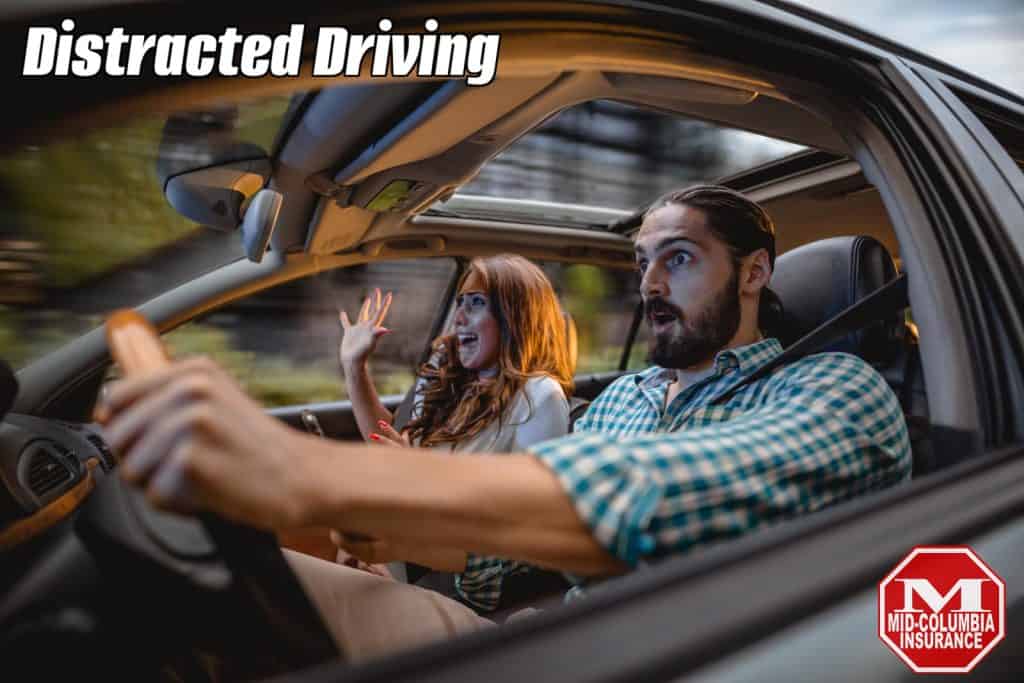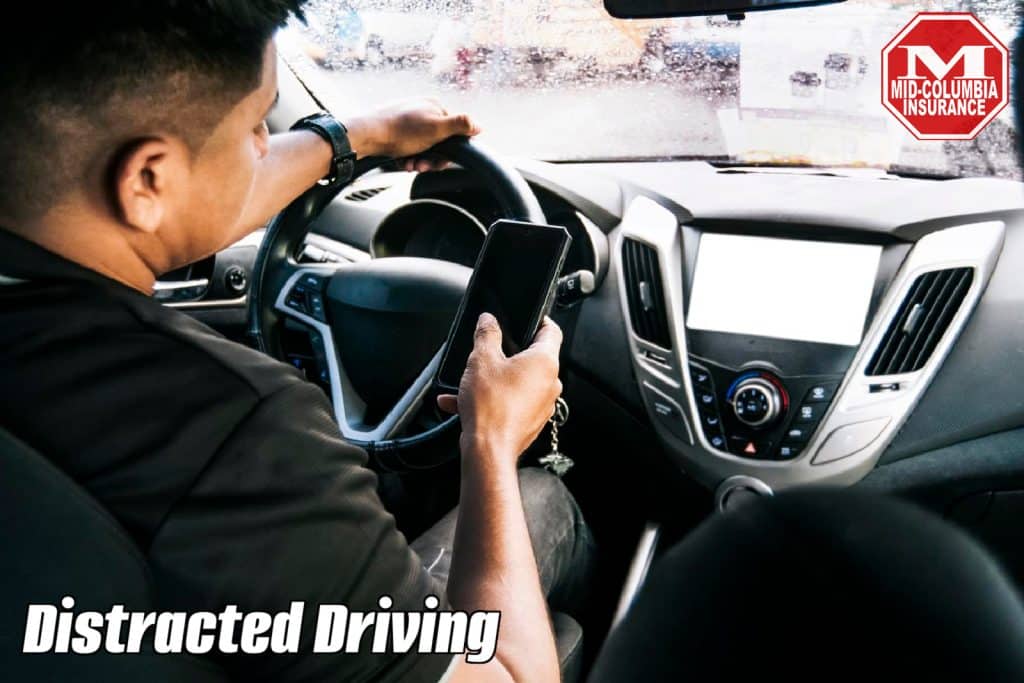
Distracted driving is any activity that diverts attention away from the primary task of driving. It endangers drivers, passengers, pedestrians, and others on the road. Common forms of distracted driving include using a cell phone or smartphone, eating or drinking, interacting with passengers, and using vehicle infotainment systems.
What Are the Types of Distracted Driving?
There are three main types of distracted driving: visual, manual, and cognitive.
- Visual distraction involves taking one’s eyes off the road.
- Manual distraction involves taking one’s hands off the steering wheel.
- Cognitive distraction involves taking one’s mind off the task of driving.
Texting while driving is especially dangerous since it involves all three types of distraction. Other dangerous behaviors include applying makeup, reaching for items, reading, and adjusting vehicle controls.
How Prevalent Is Distracted Driving and What Are the Consequences?
Distracted driving is a widespread problem, resulting in over 3,100 deaths and 424,000 injuries in the United States in 2019, according to the National Highway Traffic Safety Administration (NHTSA). As many as 1 in 5 of those distracted driving deaths were pedestrians, bicyclists, and others outside the vehicle.
The NHTSA estimates that during daylight hours, approximately 7.6% of drivers are using cell phones, either handheld or hands-free, at any given moment. Observational surveys have found even higher rates of visible phone manipulation, especially among younger drivers aged 16-24.

Who Is at High Risk for Distracted Driving?
Several groups are at high risk for distracted driving, with young adult and teen drivers being more likely to text and email while driving. In a 2019 survey, 39% of U.S. high school students admitted to texting or emailing while driving in the past 30 days. This behavior was more common among older students compared to younger ones.
Drivers who are frequent cell phone users may exhibit riskier driving behaviors overall, such as faster driving, more frequent lane changes, and harder braking. This suggests distracted driving may be one facet of a generally risky driving style for some individuals.
How Much Does Distracted Driving Increase Crash Risk?
Studies using naturalistic driving data have quantified the increased crash risk associated with various distracting behaviors.
- Taking one’s eyes off the road for more than 2 seconds doubles crash risk.
- Cell phone use quadruples crash risk, with no major safety advantage for hands-free over handheld phones.
- Texting increases crash risk by 6-23 times, with younger drivers showing the greatest increases in risk.
Experimental studies using driving simulators have found significant impairments to reaction time, lane keeping, speed control, and eye gaze patterns when drivers engage in cell phone conversations or texting.
What Legislation and Enforcement Measures Address Distracted Driving?
Many states, including Washington state, have laws banning cell phone use and texting while driving, with varying provisions and penalties. Currently, 24 states and D.C. prohibit all drivers from using handheld cell phones while driving, 37 states and D.C. ban all cell phone use by novice drivers, and 48 states and D.C. ban text messaging for all drivers.
High visibility enforcement (HVE) campaigns, which combine periods of intense enforcement with widespread media publicity, have shown promise in reducing handheld phone use and texting behind the wheel. In several NHTSA demonstration programs, observed driver cell phone use dropped 3-4 percentage points following HVE efforts.

What Technological Solutions Can Help Reduce Distracted Driving?
Crash avoidance technologies, such as automatic emergency braking and lane departure warning, may help mitigate the effects of distracted driving by alerting drivers or taking action when a collision threat occurs. Some automakers are also implementing driver monitoring systems that use cameras to detect and warn of driver inattention.
Infotainment systems are becoming more common in vehicles, which can be a source of distraction. However, well-designed systems may help by allowing drivers to complete secondary tasks more efficiently and with less manual-visual demand. Technologies like Android Auto and Apple CarPlay aim to provide a simplified interface for accessing phone functions in the vehicle.
Finally, some smartphone apps and settings, like Apple’s Do Not Disturb While Driving mode, can help by limiting notifications and functionality when the vehicle is in motion. However, the onus is on individual drivers to use these tools consistently.
How Can Parents and Educators Help Reduce Distracted Driving Among Young Drivers?
For parents of young drivers, setting clear expectations about phone use behind the wheel is critical. Organizations like the American Academy of Pediatrics recommend that families complete a parent-teen driving agreement outlining rules and consequences. Parents can also model safe driving by refraining from phone use themselves.
Many public awareness campaigns and educational programs also aim to spread the message about the dangers of distracted driving through schools, community groups, and media. Famous examples include the “It Can Wait” campaign from AT&T and other wireless carriers, and NHTSA’s “U Drive. U Text. U Pay.” program.
Conclusion
Addressing the distracted driving problem requires a multi-pronged approach involving education, legislation, enforcement, and technology.
The ultimate goal is to motivate drivers to keep their eyes on the road, hands on the wheel, and mind focused on the important task of driving safely.
With coordinated efforts from policymakers, safety advocates, automakers, and the general public, it may be possible to curb this dangerous and all-too-common behavior.
Mid-Columbia Insurance – Your Trusted Insurance Agent
Call our independent insurance professionals today at (509)783-5600 or click “Get a Quote” to request an insurance quote today. Get the insurance you want at a price you can afford!
« Back to Glossary Index